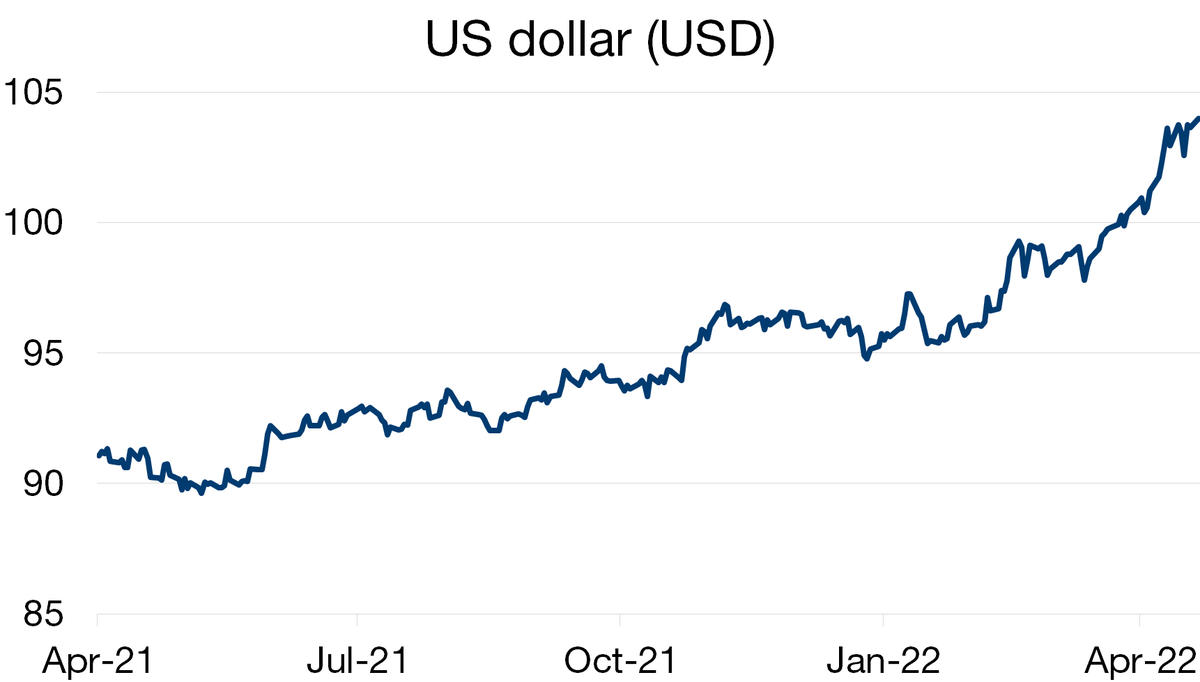09/05/2022
Flash boursier
Key data
| USD/CHF | EUR/CHF | SMI | EURO STOXX 50 | DAX 30 | CAC 40 | FTSE 100 | S&P 500 | NASDAQ | NIKKEI | MSCI Emerging Markets | |
| Latest | 0.99 | 1.04 | 11'730.42 | 3'629.17 | 13'674.29 | 6'258.36 | 7'387.94 | 4'123.34 | 12'144.66 | 27'003.56 | 1'031.50 |
| Trend | |||||||||||
| YTD | 8.37% | 0.51% | -8.89% | -15.57% | -13.92% | -12.51% | 0.05% | -13.49% | -22.37% | -6.21% | -16.28% |
(values from the Friday preceding publication)
Rate hikes galore!
Equity indices ended last week deeply in the red following Wednesday’s euphoria stemming from the Fed meeting, which thankfully did not spring any major surprises. But inflation and rate-related angst soon returned to the market as the spectre of recession loomed ever larger. Global economic growth is under strain, caught between an inflationary and monetary shock on the one hand and the conflict with Russia on the other.
Last week the Fed raised its benchmark policy rate by 0.5bp, but the news that gave the markets a temporary boost was that the FOMC is no longer actively considering a 75bp hike in future meetings to get a grip on inflation, according to Chair Powell, who believes that the US economy is in good shape and able to withstand upcoming rate hikes and thus avoid a recession. Despite the 1.4% GDP contraction in the first quarter, household consumption, business investment and hiring all remain strong.
On Friday, the Labor Department announced that the US economy added 428,000 jobs in April, beating the 400,000 consensus and the identical March number.
The unemployment rate remained at 3.6%, a whisker above the pre-pandemic low, whilst hourly wages rose by 5.5% year-on-year.
Yields on 2- and 10-year Treasuries are hovering at levels not seen since 2018. The 10-year yield has risen above 3%. The 2-year yield spiked to 2.76% minutes before the jobs report.
Elsewhere in the world, the Bank of England, which expects inflation to top 10% before the end of the year, raised its base interest rate by a quarter of a point to 1%. Sweden also raised rates, by 25bp, and Hungary by 100bp. Over in China, the zero-covid policy is proving ineffective against a variant as contagious as Omicron. Lockdowns are increasingly becoming the norm, and Chinese economic growth is slowing, with the PMI ebbing to 47.4 last month –below the 50-mark delimiting the threshold for an economic contraction for the second month in a row.
The runaway dollar
The US dollar has been on an uptrend, climbing 13% in the space of 12 months yet showing no signs of fatigue. This should come as no surprise. The monetary tightening initiated by the Fed gives it an advantage. Dollar yields have become attractive and the prospect of future rate hikes is luring investors. Versus the Swiss franc and the euro, the dollar has gained 10% and 15% in one year, respectively. Even if the European Central Bank and the Swiss National Bank undertake rate hikes, the dollar will still maintain its lead.
The greenback also benefits from its haven status amid the global growth slowdown triggered by the war in Ukraine and China’s covid-stricken economy. In addition, the rise in energy prices triggered by the Russian-Ukrainian conflict has lifted the currencies of commodity-producing countries, including the US.
The dollar rally is expected to continue but will not last indefinitely, as a strong dollar is lifting import costs for other countries – especially in energy and food – as well as debt-financing costs.



 Flash boursier
Flash boursier